Yard number 230 Launched 6 December 1985 Draft 5.8 m | Namesake Sir Wilfrid Laurier Commissioned 15 November 1986 Length 83 m Endurance 3.9 months | |
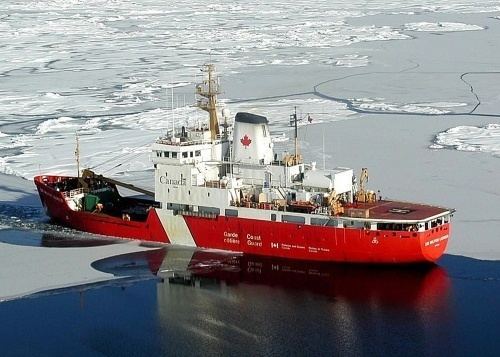 | ||
Canadian arctic supply ship 4 icebreaker ccgs sir wilfrid laurier coast guard vancouver port eh tv
CCGS Sir Wilfrid Laurier is a Martha L. Black-class light icebreaker and major navaids tender of the Canadian Coast Guard. Built in 1986 by Canadian Shipbuilding at Collingwood, Ontario, Canada, she was the last ship constructed there. The ship has been based out of Victoria, British Columbia.
Contents
- Canadian arctic supply ship 4 icebreaker ccgs sir wilfrid laurier coast guard vancouver port eh tv
- Pacing an icebreaker ccgs sir wilfrid laurier
- Description and design
- Workboatlifeboat
- Operational history
- References
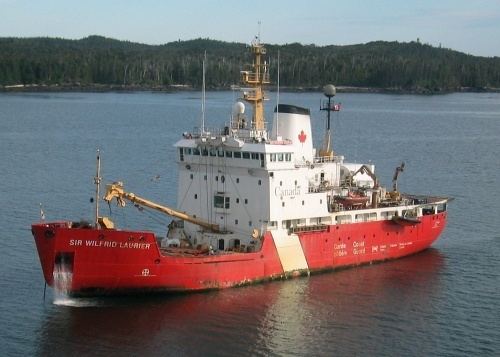
Pacing an icebreaker ccgs sir wilfrid laurier
Description and design
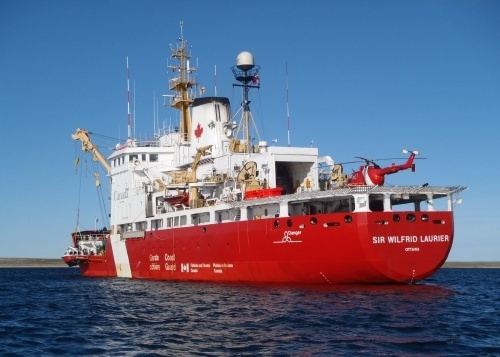
Designed as a light icebreaker and buoy tender, Sir Wilfrid Laurier displaces 4,662 long tons (4,737 t) fully loaded with a gross tonnage (GT) of 3,812.1 and a net tonnage (NT) of 1,533.6. The ship is 83.0 metres (272 ft 4 in) long overall with a beam of 16.2 metres (53 ft 2 in) and a draught of 5.8 metres (19 ft 0 in).

The vessel is powered by is propelled by two fixed pitch propellers and bow thrusters powered by three Alco 251F diesel-electric engines creating 8,847 horsepower (6,597 kW) and three Canadian GE generators producing 6 megawatts of AC power driving two Canadian GE motors creating 7,040 horsepower (5,250 kW). The ship is also equipped with one Caterpillar 3306 emergency generator. This gives the ship a maximum speed of 15.5 knots (28.7 km/h). Capable of carrying 1,096.0 long tons (1,113.6 t) of diesel fuel, Sir Wilfrid Laurier has a maximum range of 6,500 nautical miles (12,000 km) at a cruising speed of 11 knots (20 km/h) and can stay at sea for up to 120 days. The ship is certified as Arctic Class 2.
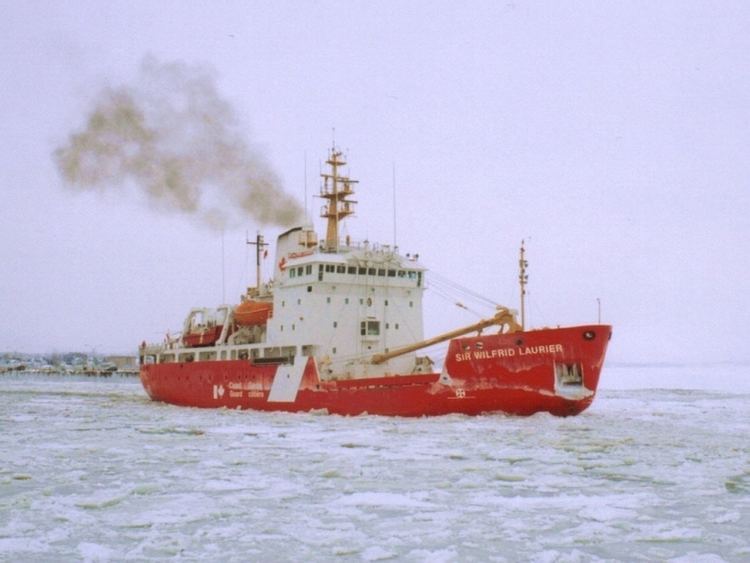
The icebreaker is equipped with one Racal Decca Bridgemaster navigational radar operating on the I band. The vessel is equipped a 980 m3 (35,000 cu ft) cargo hold. Sir Wilfrid Laurier is equipped with a flight deck and a hangar that can house two light helicopters of the MBB Bo 105 or Bell 206L types. However, the vessel is only allotted one helicopter. The ship has a complement of 27, with 10 officers and 17 crew. Sir Wilfrid Laurier has 26 additional berths.
Workboat/lifeboat
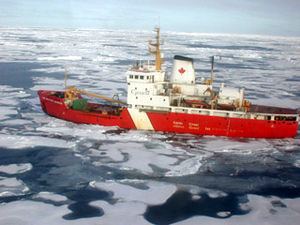
Sir Wilfrid Laurier's workboat/lifeboat No.1 was re-purposed as a training boat/work boat that has been operated by the Maritime Affairs Committee Navy League of Canada – Outaouais Branch since 1995. The boat was named Fred Gordon, in honour of WO1 (ret’d) Fred Gordon, EM, CD former Regimental Sergeant-Major for Le Régiment de Hull (RCAC) 1967–71. Fred Gordon was a member of the Hull Legion who supported the Royal Canadian Navy Sea Cadet Corps la Hulloise (CCMRC no. 230) sponsored by the Outaouais Branch of the Navy League of Canada.
Operational history
The ship was constructed by Canadian Shipbuilding at their yard in Collingwood, Ontario with the yard number 230. Named for a former prime minister of Canada, Sir Wilfrid Laurier was launched on 6 December 1985 and entered service on 15 November 1986. The ship is registered in Ottawa, Ontario, and homeported at Victoria, British Columbia. The ship was initially assigned to the Laurentian Region, but transferred to the Western Region.
Sir Wilfrid Laurier is a multi-tasked vessel which carries out a wide variety of Coast Guard programs including buoy tending, search and rescue, science work, lightstation re-supply, beacon maintenance, radio repeater site maintenance, and icebreaking/escorting, aids to navigation and science work during summer patrols in the Arctic.
The vessel has been employed on research voyages and the rescue of survivors of the car ferry Queen of the North. In 2014 the ship was part of the search for John Franklin's ships, Erebus and Terror, during the Victoria Strait Expedition. Erebus was found on that expedition. In 2016, Sir Wilfrid Laurier, accompanied by the Royal Canadian Navy vessel Shawinigan, carried archaeologists to the site for further research. The two vessels also continued the search for Terror.
